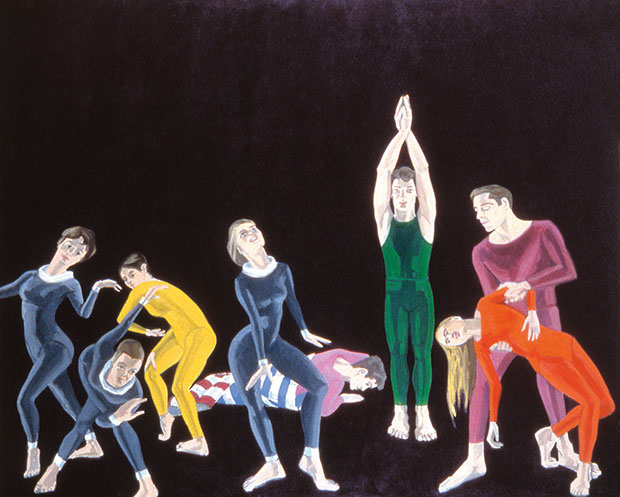
'I always go for places no one’s been before' Alex Katz
'You want to go there and see whether it’s possible, and adjust the technique to your ideas,' he tells Phaidon
Best known for his portraits of sophisticated, irrestistible women, painted using precise, broad areas of colour, Alex Katz emerged during the heyday of Abstract Expressionism and before the birth of pop art yet always worked independently of both these movements. But how did the American figurative artist embark upon the journey that has led him to influence artists as wide ranging as Richard Prince, Elizabeth Peyton, Peter Doig and Julian Opie?
Well, our new book Contemporary Artists Series book Alex Katz has the answer - and then some. During a wide ranging interview with Robert Storr that takes in Katz's own influences and anti-influences, including the work of Picasso, Giotto, Hals, Rembrandt, Kline and De Kooning, the 87-year-old Katz looks back at his earliest days at art school, where he says he "started painting ‘modern art’. The techniques were dry. It was a lot of drawing, and then you put a drawing on the canvas and you put paint on that and you worked on the paint," he says.
"Braque was considered the best painter of the type; then there was Pollock at the other extreme. After art school I dove into the Whitney and the Museum of Modern Art right away, like the last hot student from that school. When I saw Pollock’s work, I dumped the old style and I started plein air painting. I just said, ‘well, that was art school and I’m not doing it anymore.’ With the plein air paintings I found that I was painting from the back of my head – things were coming out much faster.
That was the first stage; it was also the beginning of learning how to paint directly, without using a photo/model or making studies. I kept doing these over and over again, and eventually, in four or five years, I developed a fairly good painting technique. But when I started to go larger, I just couldn’t do it in the same open way.
I started to paint more indirectly in the mid-1960s. The way in which I’d been working the canvas out was like de Kooning or Picasso or Cézanne. You build it and you tear it down and you build it again. But I’m not suited temperamentally to that. The other type of painting is arrangement, like Barney Newman or Monet. These seem to be the two poles.
When I wanted to do the finger compositions like Paul Taylor Dance Company (1963-64) they had to be predetermined. It’s an entirely different way of painting. I was taking the open painting, which I got from painting outdoors ‘with no brain’, so to speak, and working it into a way of doing more complicated paintings. Basically, I’ve always been going for places where no one’s been before. You want to go there and see whether it’s possible, and adjust the technique to your ideas.
Look out for more Alex Katz stories over the coming weeks. Meanwhile, check out the new book in the store here.